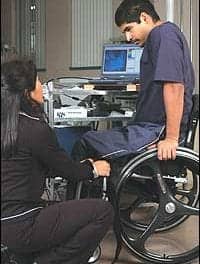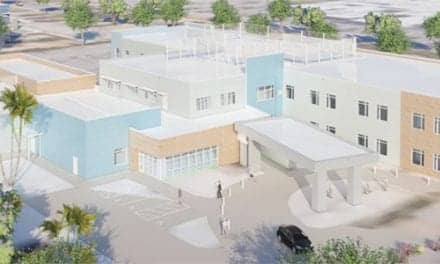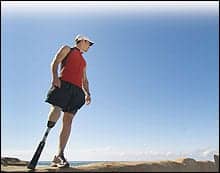Gait training using a robotic exoskeleton has the potential to help spur along the recovery of motor function after a stroke, a study published in Frontiers in Neurorobotics suggests.
In the study, researchers from Kessler Foundation used an Ekso GT robotic exoskeleton from Ekso Bionics Inc to demonstrate the potential to of high-dose therapy gait training to aid early rehabilitation after acute stroke.
Gait Training vs Standard of Care
Participants included 44 individuals (ages 18 to 82 years) admitted to Kessler Institute for Rehabilitation for acute stroke. Half received conventional standard of care (SOC), and half received SOC with an option for overground gait training in the Ekso GT (RE+SOC). Both groups received the same amount of overall therapy time.
Overground gait training in the exoskeleton was supervised by a licensed physical therapist who adjusted the variable bilateral assistance of the Ekso GT according to each individual’s progress. Outcome measures were total distance walked during inpatient rehabilitation and functional independence measure (FIM) score. The RE-SOC group trained in the Ekso GT at least three times during their stay.
“We found that gait training in the exoskeleton allowed us to increase the dose of gait training without increasing the duration of inpatient rehabilitation. Because overground walking in the exoskeleton requires active effort on the part of the participant, early intervention with this type of gait training promotes brain plasticity that may lead to greater functional improvements and more lasting effects when combined with conventional training.”
— Karen Nolan, PhD, assistant director of the Center for Mobility and Rehabilitation Engineering Research at Kessler Foundation
[Source(s): Kessler Foundation, EurekAlert]
Related Content:
Gait Training: Keep it Challenging
Gait by Numbers
Using Gait and Balance Technologies to Benefit the Pediatric Population





